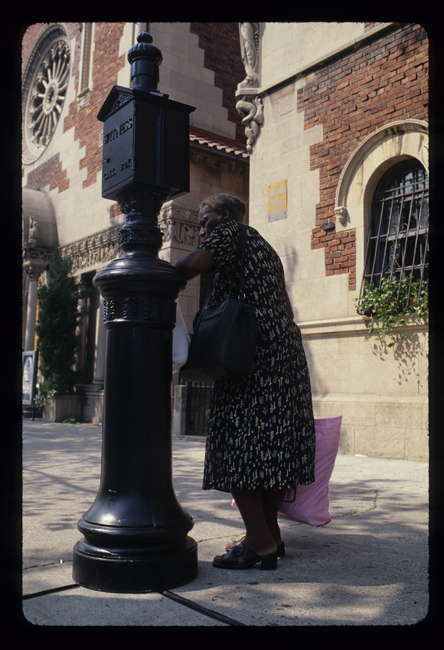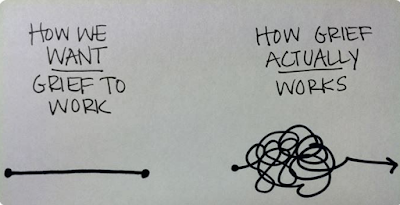Greetings from the Ledge: A Pop-Up Museum
I was running an administrative errand in a building I visit only infrequently on campus when I came across a small DIY pop-up exhibit commemorating numerous victims of racist violence. Welcome to The Ledge Gallery, folks.
This makes me glad.
It is simple. It is somber. It is done with a very sparse curatorial hand --- no labels, no descriptions. The images speak for themselves. The images speak to those who stop, who look, who listen to what the they say.
A memorial card for Malcolm X holds the center of the tableau. It forefronts "Our Black Shining Prince," the name Ossie Davis chose for Malcolm X in the eulogy he delivered at Faith Temple Church of God in February, 1965. Davis famously likened X to Jesus and called on supporters to continue his work when he exhorted, " what we place in the ground is no more now a man—but a seed-which, after the winter of discontent, will come forth again to meet us. And we will know him then for what he was and is—a Prince—our own black shining Prince!—who didn't hesitate to die, because he loved us so."
 Barry Blitt's "Dream of Reconciliation", which graced the cover of the January 26, 2015 New Yorker Magazine, also made its way into the exhibit. Dream invokes the iconic image of Martin Luther King linking arms with civil rights protestors during the march from Selma to Montgomery, but instead of King's historic contemporaries, Blitt chose to pair King with a different set of kin. The cover depicts Dr. King marching alongside Trayvon Martin, Michael Brown, Eric Garner, and Wenjian Liu, the NYPD officer killed last month with Rafael Ramos.
Barry Blitt's "Dream of Reconciliation", which graced the cover of the January 26, 2015 New Yorker Magazine, also made its way into the exhibit. Dream invokes the iconic image of Martin Luther King linking arms with civil rights protestors during the march from Selma to Montgomery, but instead of King's historic contemporaries, Blitt chose to pair King with a different set of kin. The cover depicts Dr. King marching alongside Trayvon Martin, Michael Brown, Eric Garner, and Wenjian Liu, the NYPD officer killed last month with Rafael Ramos.
There is also a photo of a witness call box, which were used so powerfully in this exhibition on police violence. Due to the exhibit, images of traditional police/fire call boxes have come to stand as a memorial for police violence.
Finally, the unidentifiable image. South Africa? The Children's March? I haven't been able to place the image of a police officer with two small boys or to track down the significance of the number, "24841." If you know, please leave me a comment or email me.
The Ledge is simple, even subtle. It is easy to miss, and in fact, I was dismayed by the number of people who either didn't notice it, or worse, noticed it and didn't think much of it. Because it made me want to jump up and down. It made me want to celebrate, despite its painful content. It made me proud of the students who came up with the idea and implemented it, claiming space on this campus for memory.
As U.S. District Judge Carlton Reeves reminded us eloquently last week in a speech before sentencing three young white men for the death of James Craig Anderson, an African American who was beaten and then run over, racial injustice today must be understood and faced squarely within the context of over 200 years of institutional racist violence. The inheritances of the past matter. They cannot be unremembered and therefore they must not be forgotten.
Thanks, Ledge guerrilla curators, for reminding us. And --- don't you all want to go build a pop-up museum right now?
This makes me glad.
It is simple. It is somber. It is done with a very sparse curatorial hand --- no labels, no descriptions. The images speak for themselves. The images speak to those who stop, who look, who listen to what the they say.
A memorial card for Malcolm X holds the center of the tableau. It forefronts "Our Black Shining Prince," the name Ossie Davis chose for Malcolm X in the eulogy he delivered at Faith Temple Church of God in February, 1965. Davis famously likened X to Jesus and called on supporters to continue his work when he exhorted, " what we place in the ground is no more now a man—but a seed-which, after the winter of discontent, will come forth again to meet us. And we will know him then for what he was and is—a Prince—our own black shining Prince!—who didn't hesitate to die, because he loved us so."
 Barry Blitt's "Dream of Reconciliation", which graced the cover of the January 26, 2015 New Yorker Magazine, also made its way into the exhibit. Dream invokes the iconic image of Martin Luther King linking arms with civil rights protestors during the march from Selma to Montgomery, but instead of King's historic contemporaries, Blitt chose to pair King with a different set of kin. The cover depicts Dr. King marching alongside Trayvon Martin, Michael Brown, Eric Garner, and Wenjian Liu, the NYPD officer killed last month with Rafael Ramos.
Barry Blitt's "Dream of Reconciliation", which graced the cover of the January 26, 2015 New Yorker Magazine, also made its way into the exhibit. Dream invokes the iconic image of Martin Luther King linking arms with civil rights protestors during the march from Selma to Montgomery, but instead of King's historic contemporaries, Blitt chose to pair King with a different set of kin. The cover depicts Dr. King marching alongside Trayvon Martin, Michael Brown, Eric Garner, and Wenjian Liu, the NYPD officer killed last month with Rafael Ramos.There is also a photo of a witness call box, which were used so powerfully in this exhibition on police violence. Due to the exhibit, images of traditional police/fire call boxes have come to stand as a memorial for police violence.
Finally, the unidentifiable image. South Africa? The Children's March? I haven't been able to place the image of a police officer with two small boys or to track down the significance of the number, "24841." If you know, please leave me a comment or email me.
The Ledge is simple, even subtle. It is easy to miss, and in fact, I was dismayed by the number of people who either didn't notice it, or worse, noticed it and didn't think much of it. Because it made me want to jump up and down. It made me want to celebrate, despite its painful content. It made me proud of the students who came up with the idea and implemented it, claiming space on this campus for memory.
As U.S. District Judge Carlton Reeves reminded us eloquently last week in a speech before sentencing three young white men for the death of James Craig Anderson, an African American who was beaten and then run over, racial injustice today must be understood and faced squarely within the context of over 200 years of institutional racist violence. The inheritances of the past matter. They cannot be unremembered and therefore they must not be forgotten.
Thanks, Ledge guerrilla curators, for reminding us. And --- don't you all want to go build a pop-up museum right now?










Comments
Post a Comment